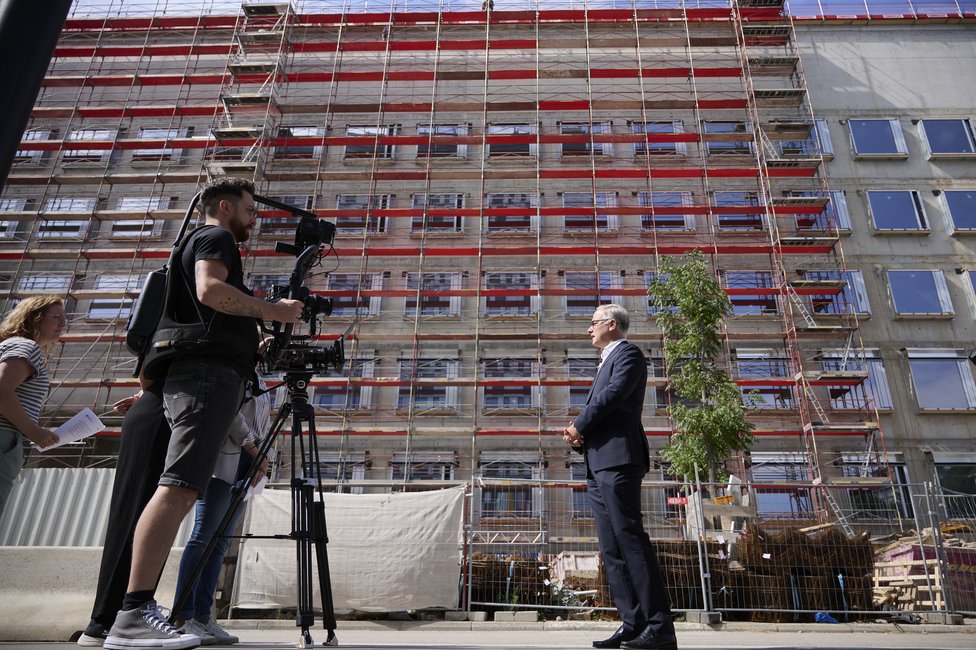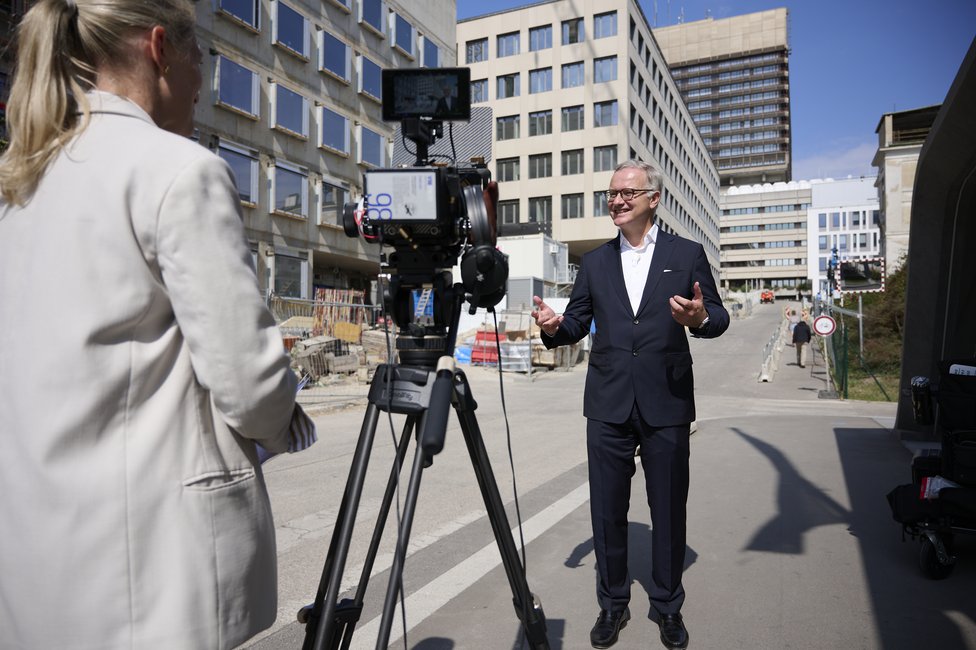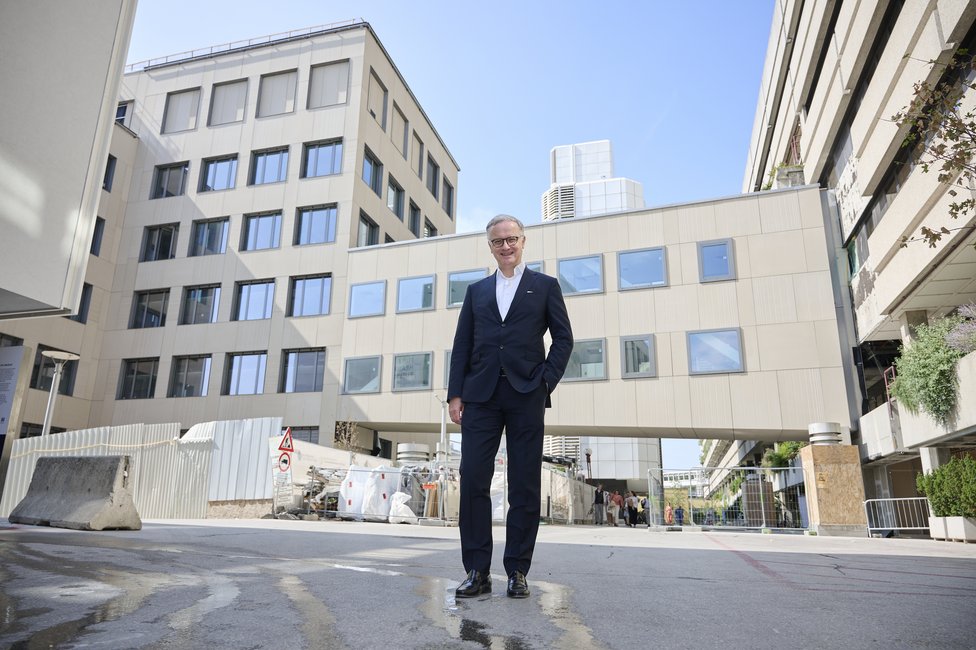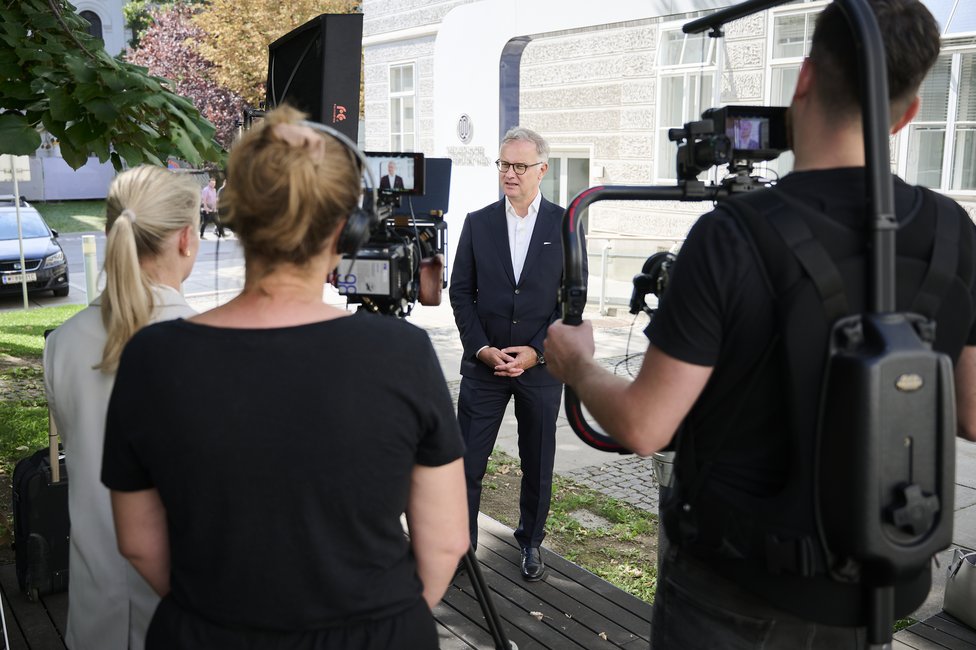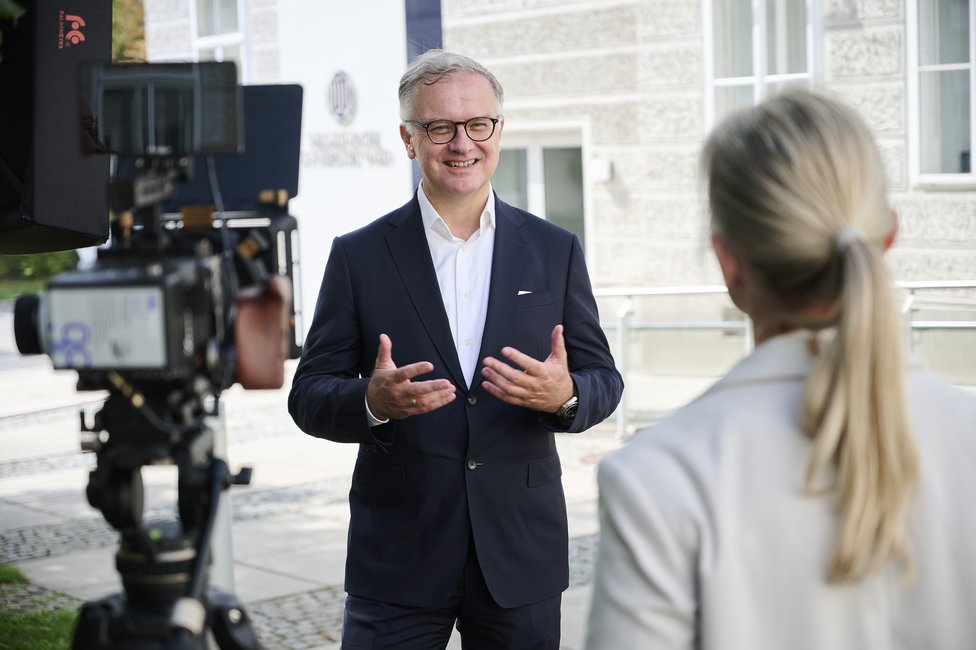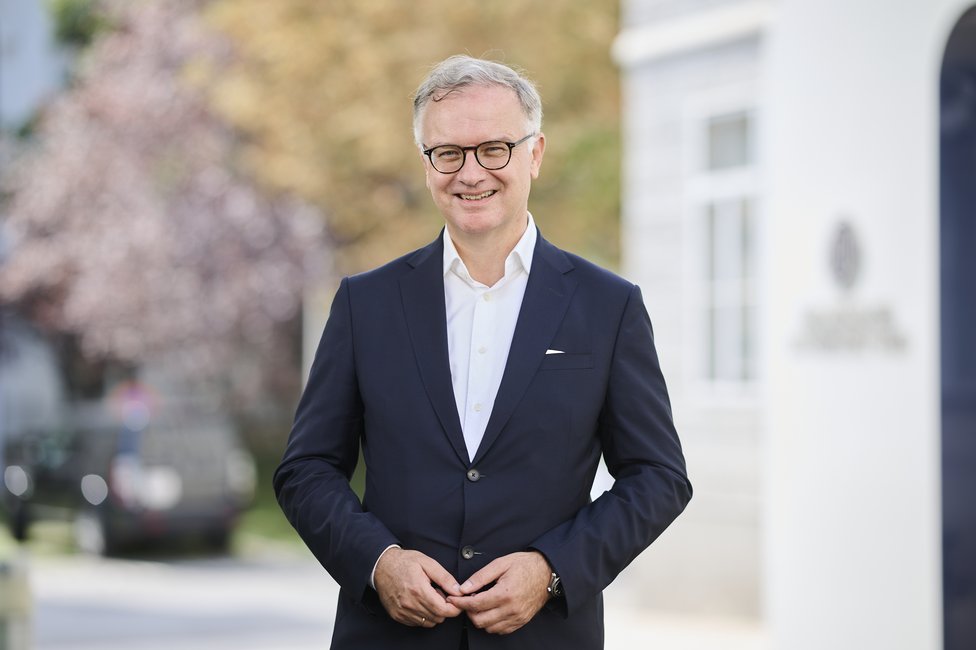A stroll through the history of medicine in Vienna takes you from the courtyards of the University of Vienna campus (‘Altes AKH’) to the towers of the Vienna General Hospital (AKH) and on to the construction sites of the future: the MedUni Campus Mariannengasse, the Eric Kandel Institute - Centre for Precision Medicine (ZPM) and the Centre for Translational Medicine (CTM). The Rector of the Medical University of Vienna, Markus Müller, talks about groundbreaking discoveries, paradigm shifts and why tomorrow's medicine aims to prevent diseases from developing in the first place.
Video
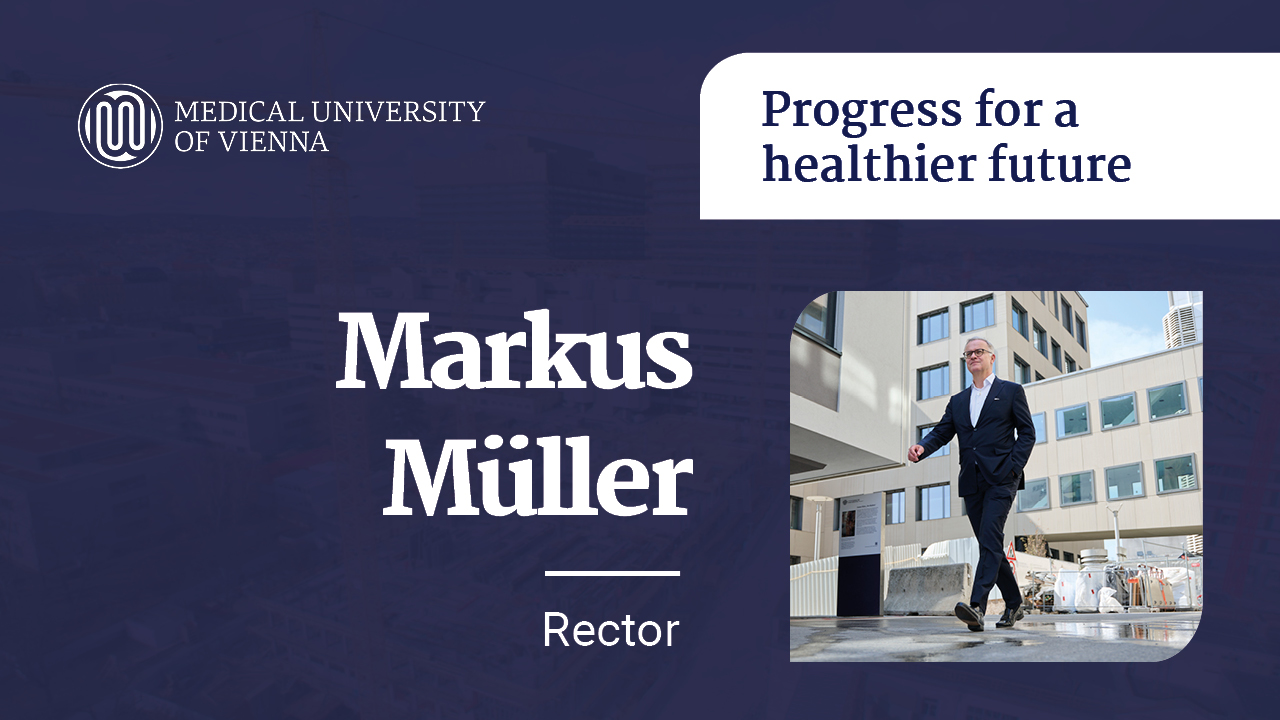
After activation, data will be sent to YouTube. Further information here: Data protection
A journey into the future of medicine, and a look back: Rector Markus Müller combines the history, present and future of medicine in a city walk. The Medical University of Vienna is currently at a historic turning point. New buildings – the MedUni Campus, the Eric Kandel Institute – Centre for Precision Medicine and the Centre for Translational Medicine – mark the dawn of a new era.
The tour begins at the Old General Hospital. ‘Saluti et solatio aegrorum’ or ‘For the healing and comfort of the sick’: this was the motto that marked the beginning of the history of the Vienna General Hospital founded by Joseph II. It was in operation for over 200 years and was the stage for medical world history. Personalities such as Gerard van Swieten laid the foundations for medicine based on natural science. In the 18th and 19th centuries, the focus was on diagnosis and description, accompanied by therapeutic nihilism: the sick were cared for, not cured. Many disciplines as we know them today originated here or split off from other disciplines. For example, the world's first ENT clinic, one of the first eye clinics and one of the first skin clinics were established here.
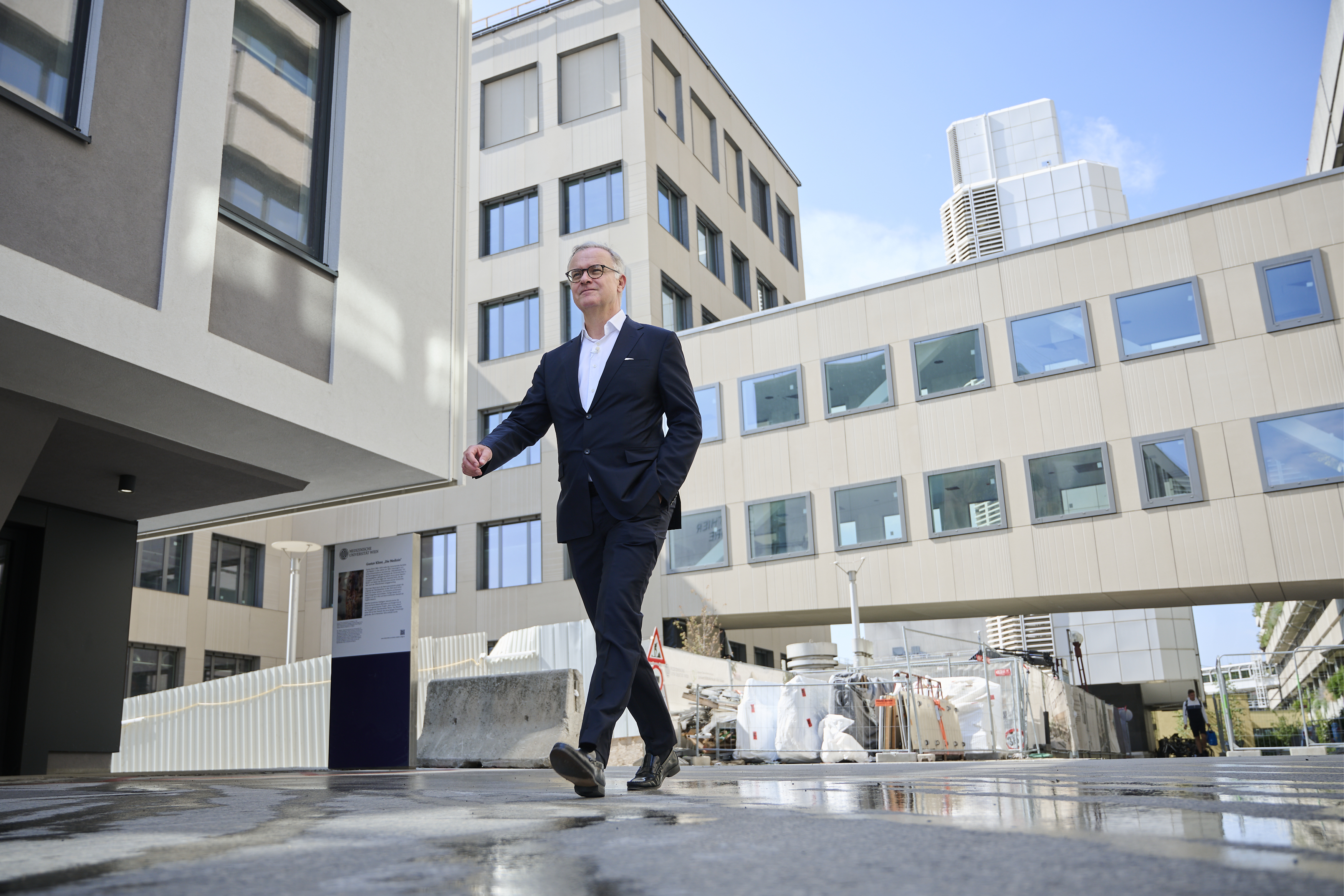
The University Hospital AKH Vienna (‘New General Hospital’) in the second half of the 20th century was followed by the ‘cathedral of repair medicine’. This put Austria at the forefront of global medicine. For example, it is one of the largest lung transplant centres in the world. The focus shifted to surgery, groundbreaking therapies were developed and cutting-edge medicine was established.
Today, medicine is changing once again – towards personalisation and prevention. The new buildings and institutes are being built in the immediate vicinity of the AKH, connected by bridges, both symbolically and structurally. They represent a vision: tailor-made medicine for every individual, early diagnosis, experimental therapies tailored to the needs of each individual, and an understanding of health that goes far beyond treatment.
The Centre for Precision Medicine bears the name Eric Kandel Institute, ‘named after the Nobel Prize winner and honorary doctor of MedUni Vienna, who was expelled in 1938 and lived very close to the current location during his childhood,’ according to Rector Markus Müller. Here, the fundamentals of precision medicine are being researched, supported by modern molecular biological methods and artificial intelligence.
The Centre for Translational Medicine also adheres to the principle of ‘from bench to bedside and back’: findings from research are transferred directly into clinical practice, where they are tested and then fed back into the laboratories to generate new questions. This creates spaces where research, teaching and clinical practice intertwine and innovation comes to life through direct exchange between generations.
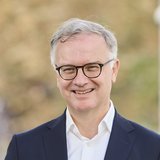
‘In the new buildings, the vision becomes reality: tailor-made medicine for every individual, early diagnosis, experimental therapies and an understanding of health that goes far beyond treatment.’
‘Build it, and they will come,’ says Rector Markus Müller, quoting a colleague from Harvard. The construction of modern infrastructure creates space for the best minds and thus for further development. According to the rector, the new buildings are ‘a gift from our generation to the next.’
A gift that will shape the future of medicine in Vienna and throughout Europe and guarantee ‘that we as a university keep pace with modern competition,’ says Müller: ‘I am convinced that we have succeeded very well in this with this ensemble of buildings, from the Mariannengasse campus to the Centre for Transnational Medicine to the Eric Kandel Institute – Centre for Precision Medicine. All clinical disciplines will be working close together here and will thus also inspire each other.’
